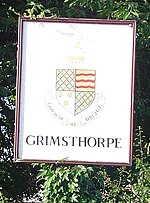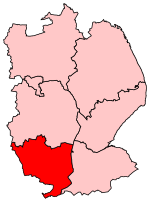Vaudey Abbey
1147 establishments in England1536 disestablishments in EnglandChristian monasteries established in the 12th centuryCistercian monasteries in EnglandCommons link is the pagename ... and 2 more
Monasteries in LincolnshireReligious organizations established in the 1140s
Vaudey Abbey , also known as Vandy Abbey or Vandey Abbey, was an English Cistercian abbey. It was founded in 1147 by William, Count of Aumale, Earl of York. Its site is within the Grimsthorpe Castle park, in Lincolnshire, 3.7 miles (6 km) northwest of Bourne on the A151, but there are no remains of the Abbey aside from earthworks.The Victoria County History contains a substantial report and a list of abbots.
Excerpt from the Wikipedia article Vaudey Abbey (License: CC BY-SA 3.0, Authors).Vaudey Abbey
Four Mile Riding, South Kesteven Edenham
Geographical coordinates (GPS) Address Nearby Places Show on map
Geographical coordinates (GPS)
| Latitude | Longitude |
|---|---|
| N 52.782222222222 ° | E -0.46444444444444 ° |
Address
Daudney Abbey
Four Mile Riding
PE10 0NF South Kesteven, Edenham
England, United Kingdom
Open on Google Maps









